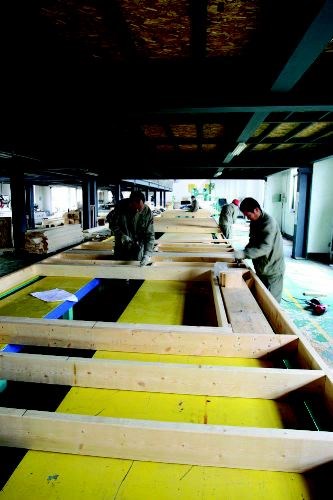British Columbia is continuing its efforts to position lumber as an accepted construction material in China during another trade mission beginning Sunday led by Jobs, Tourism and Innovation Minister Pat Bell.
The former forests minister -- who retained responsibility for international marketing under new Premier Christy Clark -- is eying a huge potential housing market in the country of 1.4 billion people.
The Chinese government recently announced its new five-year plan calls for an additional 36 million affordable housing units, 10 million each in 2011 and 2012.
Combined with China's annual building rate of 10 million housing units, it puts the country on track for 86 million units in the next five years, suggested Bell, who made five trips to China as forests minister in the past 33 months.
The estimates in China dwarf the current American annual housing market of less than 600,000 starts, even considering that Chinese housing units are smaller on average than in the United States.
"This is one of those points in time -- if we are successful -- that people may look back at and see as transformational. It could literally take the level of trade we have with China and expand it far beyond anyone's imagination," Bell told reporters on a conference call.
"I'm not saying we've accomplished everything we need to do. But I think all the elements are in place," he said.
Last year, B.C. shipped 2.8 billion board feet of lumber to China, nearly double the amount from 2009. This year, the province hopes to top 4 billion board feet to China.
The increased exports to China are helping companies like Canfor, West Fraser, Hampton, Conifex, and Tolko restart shuttered mills hit hard during the U.S. housing collapse of the past several years.
All of the companies will be represented during the five-day trade mission, aimed largely at showcasing the green benefits of building with wood.
As part of their recently-released five-year plan, the Chinese government has also said it wants to reduce its carbon footprint, considered an important element in combatting climate change. Wood is considered environmentally friendly because it is a renewable resource, unlike steel and concrete. Replanted forests can help sequester carbon, and wood in housing also helps store carbon.
Bell will join China's vice-minister of Housing and Urban-rural Development Qiu Baoxing in hammering in the final nails of the Green Home Canada building. The three-story, nine-apartment wood-frame building will be constructed in three days on site at the Green Building Show in Beijing. Modular components have been pre-fabricated off site. The cost to B.C. of the demonstration project is about $200,000.
As part of his trip to China, Bell will also be meeting with mining interests.
In his new capacity as jobs minister, he said eventually he will add international marketing for areas like tourism, agriculture and international education.
Baoxing, China's vice-minister of housing, will visit British Columbia in mid-April.
Tapping into China's housing market
- Coupled with the push on affordable housing, British Columbia hopes to gain more acceptance for wood as a key construction material.
- Much of the lumber exported to China currently is used in concrete forming and remanufacturing.
- B.C. has made some inroads into lumber for use in roof trusses and in-fill walls, but hopes to gain a foothold as a framing material, particularly in the six-storey walkups popular in China.
- About 60 to 70 per cent of the 10 million housing units built annually in China are walk-ups.



